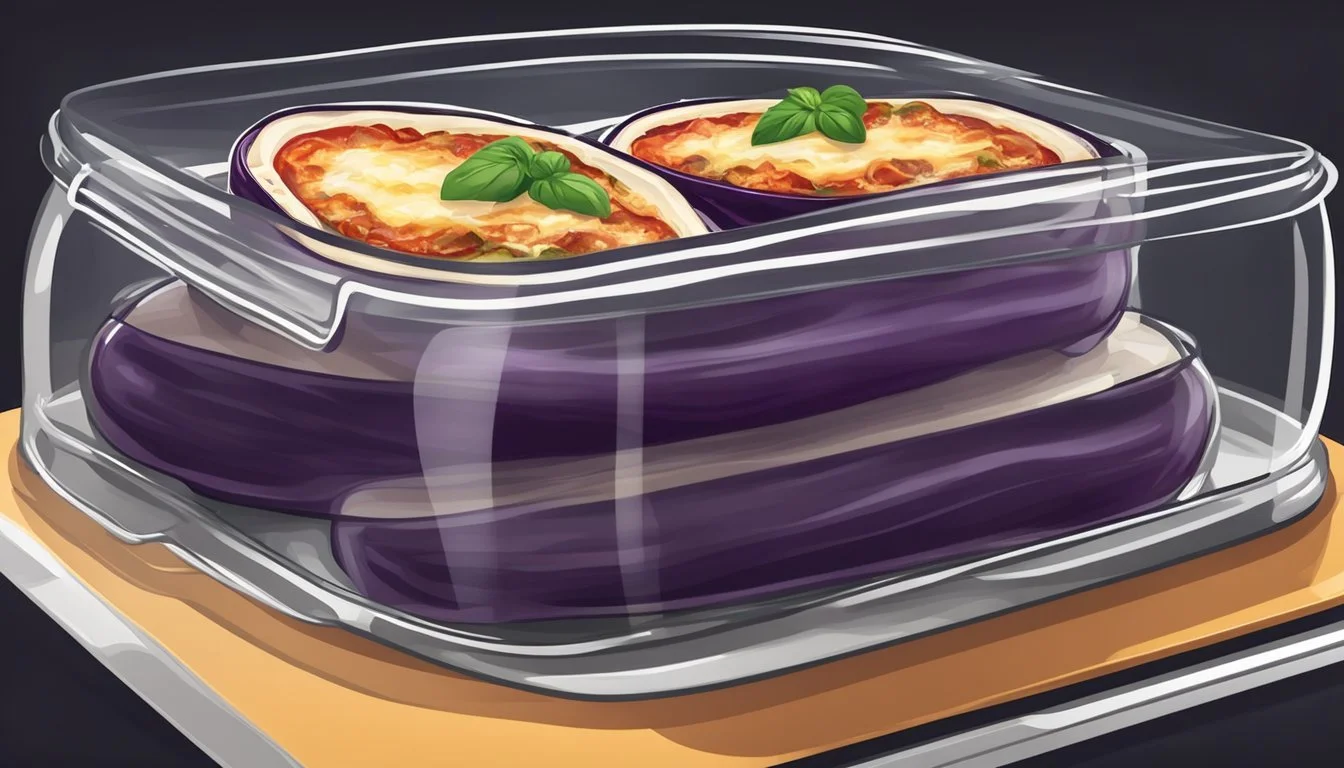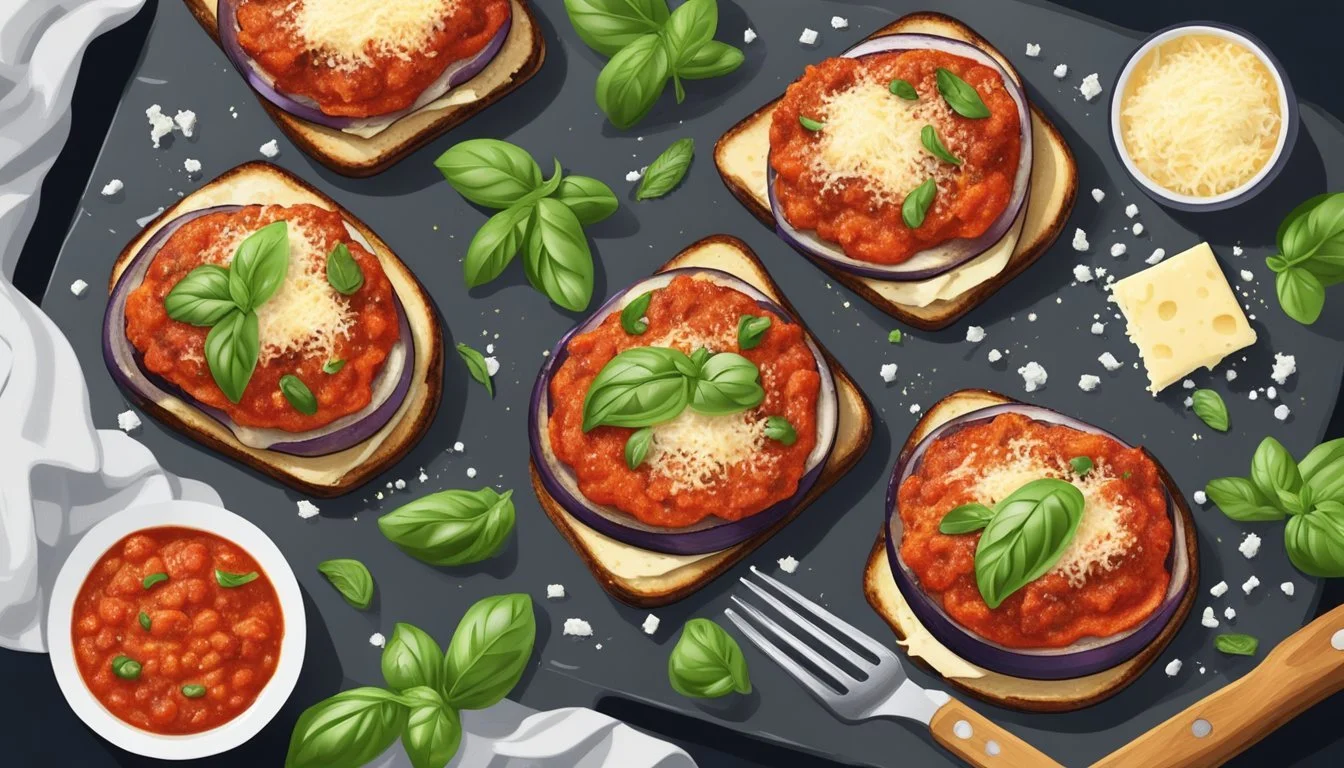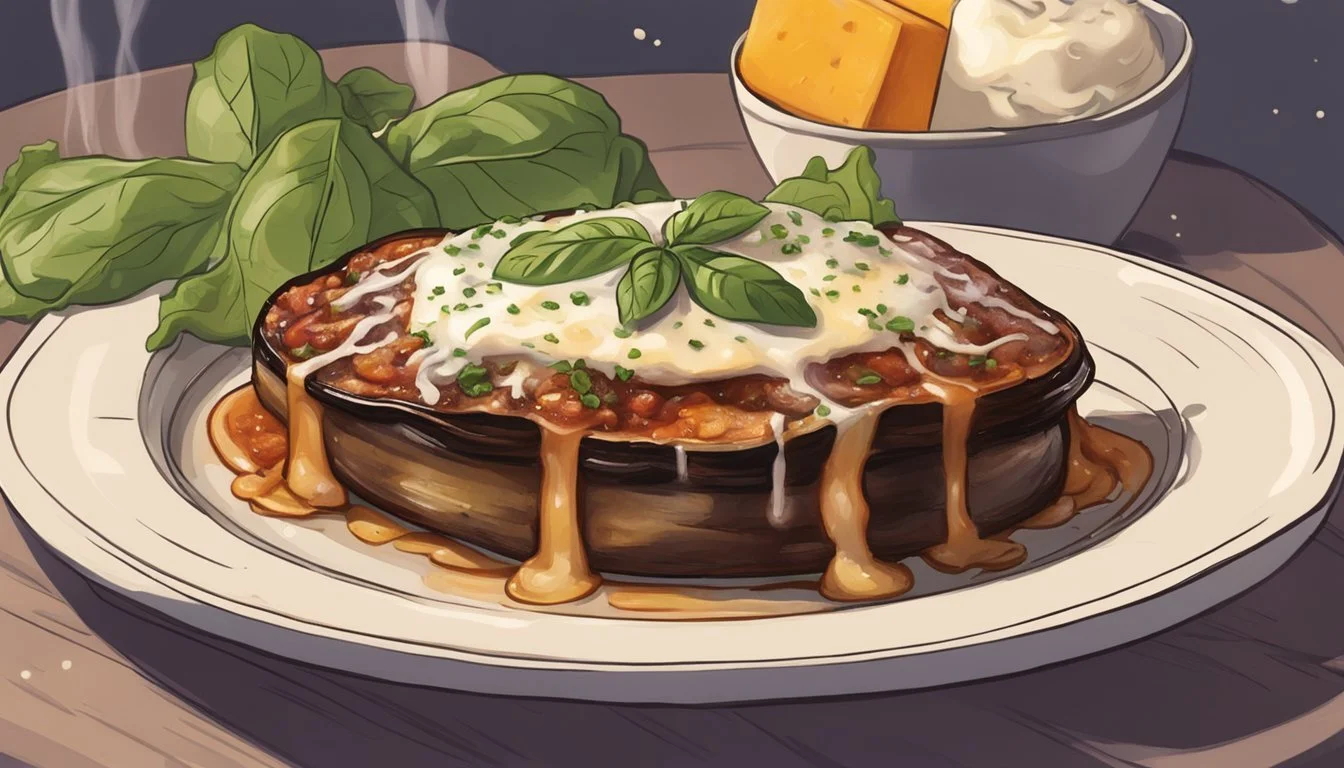Best Way to Reheat Grilled Eggplant Parmesan
Tips for Maintaining Cheesy Goodness and Tenderness
Grilled eggplant parmesan is a hearty dish beloved for its layers of flavor and textures, with succulent eggplant slices melding harmoniously with rich tomato sauce and gooey, golden cheese. However, one challenge that enthusiasts often face is how to reheat this dish without sacrificing its tender interior and crispy, cheesy exterior. The key to a delectable leftover experience lies in understanding how to properly apply heat to rejuvenate the dish without causing it to become dry or soggy.
The best reheating method balances temperature and time to ensure that the eggplant parm retains moisture while reviving its crispness. It should not only warm the dish thoroughly but also restore the interplay of textures that make the initial serving so enjoyable. Techniques vary by heat source, from conventional ovens and toaster ovens to skillets on the stovetop, each offering a specific approach to achieving that freshly cooked quality.
Selecting the optimal reheating technique is essential for anyone looking to relish their grilled eggplant parmesan just as much the second time around. It's about preserving the integrity of the eggplant's texture, maintaining the richness of the cheese, and keeping the layers distinct and flavorful. Therefore, understanding these various methods is crucial for anyone aiming to enjoy their leftovers without compromising on taste or quality.
Understanding Eggplant Parmesan
Eggplant Parmesan is a classic Italian dish that combines the rich flavors of marinara sauce, melted cheeses, and the tender texture of breaded eggplant. The layered casserole often features slices of eggplant that have been dredged in breadcrumbs and fried, then layered with:
Marinara sauce: A tomato-based sauce seasoned with herbs.
Parmesan cheese: A hard, granular cheese known for its strong umami flavor.
Mozzarella cheese: A semi-soft cheese recognized by its meltability.
This dish is baked until the cheese is gooey and slightly browned, emanating a comforting aroma that's both hearty and rustic. The layering process ensures that flavors meld together, with the Parmesan cheese providing a salty, sharp counterpoint to the sweet and herby marinara sauce, while the mozzarella adds creaminess and stretch.
One of Eggplant Parmesan's key appeals is its texture. When properly made, the eggplant itself should be tender and flavorful, with a crispy exterior that offers a pleasant contrast to the smooth, creamy cheese and rich marinara sauce. Chefs and home cooks alike strive to achieve this balance of textures to ensure a satisfying eating experience.
To appreciate Eggplant Parmesan fully, one must understand these elements and how they work together to create a comforting yet sophisticated dish. Preserving these textures and flavors when reheating is essential to enjoy this Italian favorite as intended.
Storing Leftovers Properly
Proper storage of leftover grilled eggplant parmesan is crucial to maintain its quality and flavor whether it's being refrigerated for short-term enjoyment or frozen for longer keeping.
Refrigeration Tips
Storing leftover eggplant parmesan in the refrigerator involves more than just placing it in a container. An airtight container is essential to prevent the absorption of odors and to retain moisture. Before refrigerating, one should let the dish cool to avoid increasing the temperature inside the refrigerator which can lead to food spoilage.
Container tips: Use glass or plastic airtight containers.
Duration: Refrigerate promptly within 2 hours of cooking.
Temperature: Keep at or below 40°F (4°C).
Shelf life: Consume within 3-5 days for best quality.
Freezing for Long-Term
Freezing eggplant parmesan can keep its flavor intact for several months. Wrap individual slices tightly in aluminum foil or cling wrap, and then place them into airtight freezer bags or containers, squeezing out as much air as possible.
Freezing steps:
Cool the slices at room temperature.
Wrap in foil or cling wrap.
Place in airtight containers or freezer bags.
Freezer temperature: Set at 0°F (-18°C) or lower.
Shelf life: Best used within 6 months to avoid freezer burn.
Labeling: Write the date of freezing on the container for proper rotation.
Prepping for Reheating
When one plans to reheat leftover grilled eggplant parmesan, the way it's stored can make a significant difference. Cover the dish with aluminum foil if it's to be reheated in the oven. For microwave reheating, one should store it in microwave-safe containers. Divide the dish into serving sizes to make reheating more manageable.
Oven reheating: Store with foil for easy oven transfer.
Microwave reheating: Use microwave-safe airtight containers.
Portioning: Slice into portions before refrigerating to simplify reheating.
Avoid cross-contamination: Keep the container sealed until ready to reheat.
Reheating Methods Overview
Selecting the right reheating method for grilled eggplant parmesan preserves its cheesy goodness and tender texture. The aim is to ensure a warm, inviting center with a crispy exterior, without drying out the dish or compromising its flavor.
Oven Method
Preheat the oven to 350°F. Place the grilled eggplant parmesan on a baking sheet lined with parchment paper or lightly covered with aluminum foil to prevent it from drying out. Reheat for approximately 10 minutes, then remove the foil and continue to heat for an additional 5-10 minutes to restore the crispy exterior. One can monitor the dish's internal temperature using a temperature checker to ensure optimal warmth without overheating.
Microwave Method
For a quick method, use a microwave. Transfer the eggplant parmesan to a microwave-safe dish, cover it with a microwave-safe lid slightly ajar to allow steam to escape, and reheat on medium power. To ensure even warming, heat in short bursts of 30 seconds, checking regularly to prevent overcooking.
Stovetop Method
One can use a skillet on the stove to reheat eggplant parmesan. Warm a small amount of olive oil over medium heat, and place the eggplant slices in the skillet. Cook for 1-2 minutes on each side until they are golden brown and the cheese is bubbly and warm. This method can add a delightful crispiness to the dish.
Air Fryer Technique
An air fryer can effectively reheat eggplant parmesan and maintain its crispy exterior. Place the eggplant parmesan in the air fryer basket and reheat at 350°F for a few minutes. It's vital to check frequently as the air fryer can cause the dish to dry out or burn if left unattended for too long.
Alternate Methods
Other options include using a toaster oven, similar to the conventional oven method, or finishing under the broiler for a crispy top layer. A slow cooker can keep the dish moist but may not achieve the desired crispiness. When using these alternates, monitoring and adjusting the temperature and time is key to prevent overcooking.
Achieving the Best Texture and Flavor
When reheating grilled eggplant parmesan, maintaining the dish’s original texture and robust flavor profile is paramount. Careful attention to reheating techniques ensures the eggplant remains tender, the cheese stays gooey, and the coating re-crisps to perfection.
Maintaining Cheesiness
To preserve the delightful stretch and smooth texture of the cheese in eggplant parmesan, one must gently reheat the dish. Utilizing a moderate oven temperature, set to 350°F (175°C), and covering the dish with aluminum foil can prevent the cheese from drying out. Heating the eggplant parmesan until the cheese is visibly melted and bubbly captures the essence of its original cheesiness.
Ensuring a Crispy Outcome
Achieving a crispy texture in the coating of eggplant parmesan after grilling involves a careful balance of heat and timing. Olive oil, known for enhancing flavor and crispiness when used sparingly, can be brushed on a baking sheet prior to reheating. Removing the covering foil partway through baking allows the top layer to crisp up, closely replicating the initial grilled finish. One might opt to add extra cheese in the last few minutes of reheating for an additional layer of texture and flavor.
Safety and Precautions
When reheating grilled eggplant parmesan, one must prioritize both food safety and the quality of leftovers. Here are key considerations:
Temperature Check: An individual must ensure that the eggplant parmesan reaches an internal temperature of at least 165°F to prevent the risk of foodborne illness. Using a food thermometer will accurately confirm that it's safe for consumption.
Storage: Prior to reheating, the dish should have been stored properly in the refrigerator or freezer. For refrigeration, it should not be kept for more than 3-4 days. If frozen, it should be consumed within 2-3 months.
Handling: When handling eggplant parmesan, always use clean utensils to minimize contamination. Allow the dish to thaw in the refrigerator if it was frozen before reheating to maintain safety and even heating.
Reheating Methods: There are various methods to reheat the dish safely:
Method Temperature Time Oven 350°F 10-15 min Skillet Medium-high 1-2 min per side Microwave High Check every 30 sec
Oven Caution: When using the oven, cover the dish loosely with foil to avoid drying out. It’s also crucial to ensure the foil does not touch the heating elements, as this can pose a fire hazard.
Avoid Overheating: To keep the eggplant parmesan cheesy and tender, one must avoid overcooking as it can result in a rubbery and tough texture.
By following these safety protocols and precautions, one can confidently enjoy reheated eggplant parmesan that is both delicious and safe to eat.
Complementary Sides and Recipes
When reheating grilled eggplant parmesan, selecting the right sides and recipes not only enhances the meal but also ensures a balance of flavors and textures. Below are carefully chosen accompaniments that are both easy to prepare and can elevate a simple reheated dish to a delightful meal.
Sides to Serve
Simple Green Salad:
Ingredients: Mixed greens, cherry tomatoes, sliced cucumbers
Dressing: Olive oil, balsamic vinegar, salt, pepper A simple green salad lightly dressed with olive oil and balsamic vinegar adds a fresh and crisp contrast to the rich and cheesy eggplant parmesan.
Garlic Bread:
Bread Choice: Baguette or Italian bread
Preparation: Slice the bread, spread with garlic butter, and toast until golden brown. Garlic bread offers a satisfying crunch and a savory flavor that pairs excellently with the tomato sauce in eggplant parmesan.
Delicious Pairing Recipes
Roasted Asparagus:
Ingredients: Fresh asparagus, olive oil, grated Parmesan cheese, garlic powder, salt
Method: Toss asparagus with seasonings, roast until tender. Lightly roasted asparagus with a sprinkle of Parmesan cheese complements the eggplant parmesan with its delicate texture and nutty flavor.
Ingredients: Quinoa, vegetable broth, onions, carrots, garlic, olive oil, fresh herbs
Cooking Process: Sauté onions and carrots, stir in quinoa, add broth, and simmer. Quinoa pilaf serves as a nutritious and hearty side that absorbs the rich flavors of the tomato sauce in eggplant parmesan, making it a delightful addition to the meal.
Thawing and Temperature Tips
When reheating grilled eggplant Parmesan, one must ensure that the dish maintains its rich cheesy texture and tender eggplant slices. Proper thawing and temperature control are key to achieving this.
Thawing Eggplant Parmesan: If the eggplant Parmesan is frozen, they should thaw it completely before reheating. Thawing can be done by transferring the dish from the freezer to the refrigerator and leaving it overnight. This slow thawing method helps preserve the eggplant's texture and allows for even reheating.
Bringing to Room Temperature: Before reheating, the dish should be brought to room temperature. They should remove the eggplant Parmesan from the refrigerator and let it sit out for approximately 30 minutes. This step cuts down on reheating time and helps prevent the edges from becoming too crispy or burnt.
Reheating Temperatures: The oven is often the preferred method for reheating eggplant Parmesan, as it heats the dish evenly and helps retain moisture. Preheat the oven to 350°F and place the dish inside, covered with foil to keep it moist. Using an oven:
Preheat to 350°F
Cover with foil
Heat for 15-20 minutes
A temperature checker, or food thermometer, should be used to ensure the eggplant Parmesan reaches an internal temperature of 165°F, which is considered safe for consumption and indicates the dish is thoroughly warmed.
By following these thawing and temperature tips, the reheated grilled eggplant Parmesan should be as delightful as when it was first served.
Final Tips and Tricks
When reheating grilled eggplant parmesan, maintaining the dish’s delectable texture and flavor is crucial. One should be mindful not only of temperature but also of the technique used. Parchment paper can serve as an ally in the process. Using parchment paper on a baking sheet before placing the eggplant parmesan prevents sticking and helps to ensure an even reheat.
For a moist and tender interior, adding a bit of marinara sauce on top before reheating can reintroduce moisture that may have been lost. However, one should avoid too much sauce as it could make the breading soggy. After reheating, a dollop of sauce can also enhance the flavor profile and present a fresh layer of taste.
Here’s a concise breakdown of techniques:
Oven Reheat:
Preheat oven to 350°F.
Place eggplant on a baking sheet lined with parchment paper.
If needed, spoon a small amount of marinara sauce on top.
Heat for 10 minutes, then uncover for an additional 5-10 minutes for a crispy layer.
Microwave Reheat:
For speed, use a microwave-safe dish.
Cover the dish with a microwave-safe lid, slightly ajar.
Reheat in short intervals, checking for even warmth.
In all methods, one should be cautious not to overcook the eggplant as it can become too soft or lose its savory flavor. The reheated eggplant parmesan should emerge as if just prepared — tender on the inside, with a cheese that is beautifully melted, and with a desirable lightly crisped exterior.






